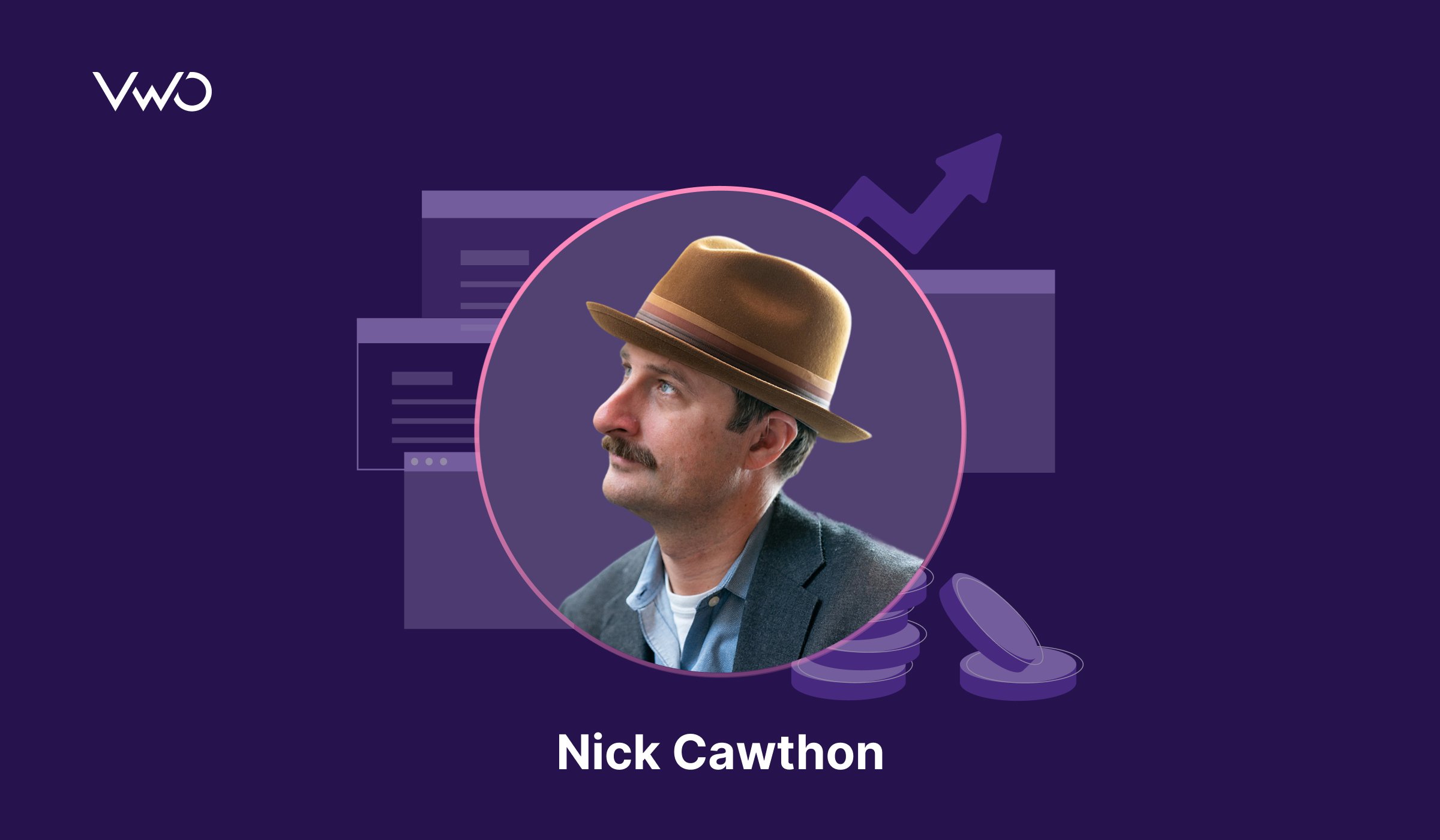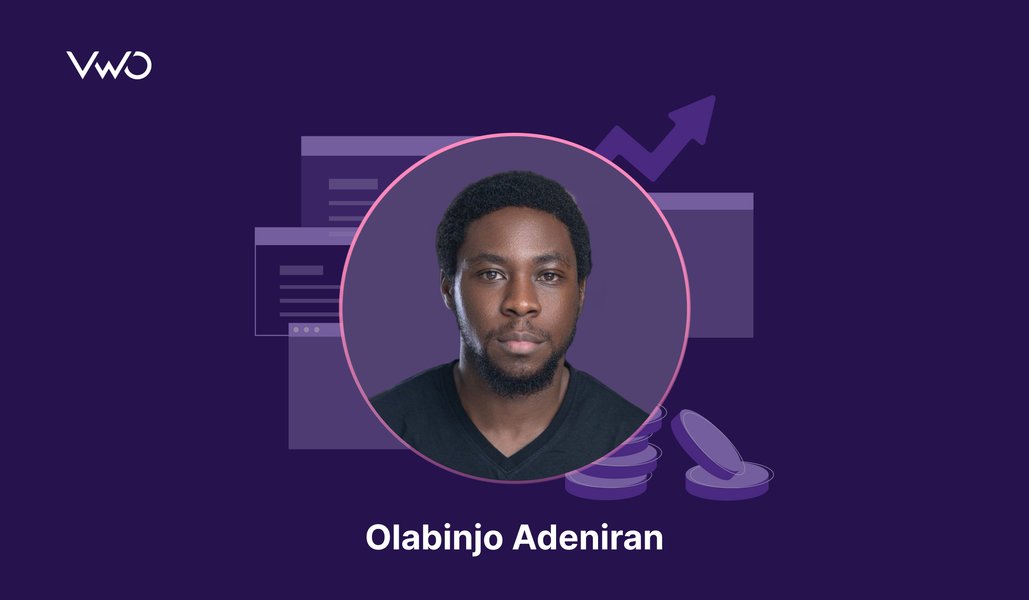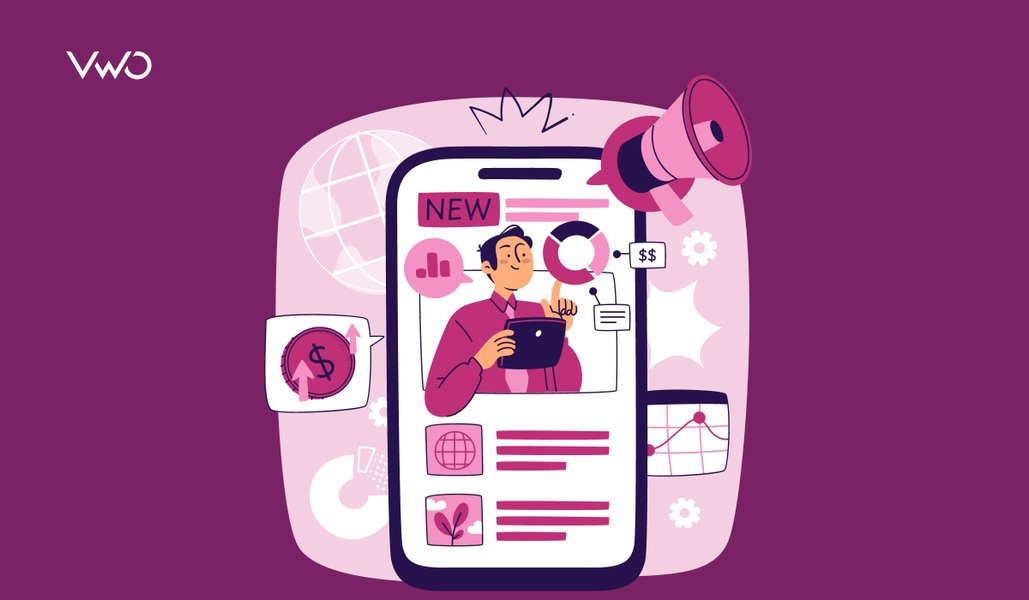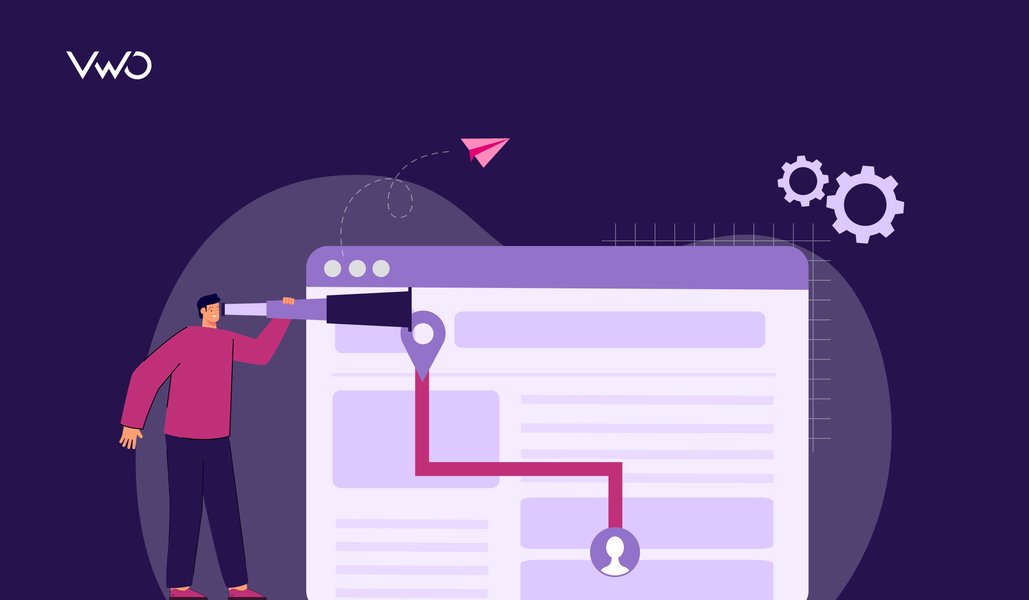We’re back with another insightful conversation on CRO Perspectives by VWO.
In this series, we go beyond frameworks and case studies to bring you in-depth, one-on-one conversations with experts who’ve spent years shaping how real teams approach experimentation, design, and growth.
From scaling programs to shifting team mindsets, each interview dives deep into the lived experience of practitioners who are moving the needle from behind the scenes.
For our 18th interview, we spoke with Nick Cawthon, designer, researcher, and strategist who’s been quietly shaping enterprise workflows for over two decades.
What follows is a grounded, highly practical look at how AI is reshaping design workflows — and how smarter, faster design decisions can help CRO teams close the gap between user intent and digital experience.

Leader: Nick Cawthon
Role: Principal, Gauge.io
Location: San Francisco, California
Why should you read the interview?
Nick Cawthon has spent over 20 years working at the intersection of design, research, and strategy. As the founder of Gauge, he has helped technical teams across various industries, including finance, healthcare, and cybersecurity, improve the tools and workflows they rely on every day.
His experience spans collaborations with companies such as Adobe, Visa, Intel, and VMware, and he’s been invited to speak at industry events like Lunch@Google.
He also teaches design strategy in MBA programs and contributes open-source tools for researchers.
In this interview, Nick brings that wealth of experience to the table, offering grounded, practical guidance for designers and researchers navigating complex environments.
He talks about choosing the right methods for the right moments, the importance of turning data into narratives people actually care about, and how AI is subtly but meaningfully shifting the designer’s day-to-day.
Also, he shares how good design is not just about aesthetics, but it’s also about solving key usability issues through in-depth research and experimentation.
When research is clear and design is intentional, teams can better identify what to test, understand why something worked, and scale what delivers real impact.
Whether you’re working inside a large organization or supporting one from the outside, Nick’s perspective will sharpen how you think about user research and design.
How AI is reshaping design: From industry impact to changing workflows
Over the past two decades, design has seen several waves of transformation—from pen and paper to Microsoft Office tools, and now, the rise of generative AI.
Today’s shift is less about replacing humans and more about redefining where and how humans should stay in the loop. Generative tools are starting to replace many manual processes, but the question remains:
When do we need a designer’s judgment, and when can we trust the system?
In many ways, this feels like the beginning of a second digital transformation era — with plenty of change still ahead. That shift is already influencing the way designers work.
Plugins that connect AI and design tools are still immature, but the mindset shift has begun.

Designers are no longer just handing over wireframes in Slack. They’re thinking like product managers, prompting AI with detailed user-centric requirements, and collaborating more closely with engineers to explore, iterate, and refine.
In this new ecosystem, the designer’s role is not limited to specifying “what goes where.” It’s about defining intent — the user’s need — and letting the system explore how best to fulfill it, within carefully placed constraints.
Depending on your LinkedIn algorithm, you’ll see existential questions like: “Is engineering dead? Is design dead?” I think this echoes the same sentiments from 20 years ago, when we wondered if we had just taken away the secretary’s job who used to type emails. But I don’t think we’re making any jobs obsolete. We’re just changing our need to focus our skill sets and creating an impetus to uplevel our understanding.
Your typical design process and strategy for conducting user research
Doing research and sort of lining yourself up for strategy is still a one-to-one, real human conversation.
It’s about understanding requirements and analysis, and ensuring that what you design is the right thing. Because it’s so easy to jump into design tools without a clear direction or understanding of what needs will be met.

So, the process of initiation and generative thinking to go into requirements, both engineering and design, is still very human-related.
However, how we process the transcripts and the unstructured qualitative data that emerge from these conversations has improved significantly.
Integrating your existing component libraries with AI tools
For generative tools to work effectively, two things are essential:
- A collaborative workspace where multiple designers (and developers) can work together.
- The ability to integrate directly with existing code repositories — ideally, cloning and working from them with guardrails in place.
As long as designers understand some basics of version control and follow best practices (like working within the correct folders, mimicking code style, and limiting scope), AI-assisted workflows can be incredibly powerful, not just for creating, but for collaborating.
After all, most modern web experiences are about input and interaction, not just visual presentation.

Deciding between qualitative and quantitative research
In many cases, the client’s budget ultimately drives the decision. I do wish we had more flexibility to exercise greater autonomy in those situations.
Also, you can sense an organization’s maturity by how much it wants to invest in research, time, money, and scope.
If it’s an internal tool, qualitative one-on-one conversations before and after you develop an interface are sufficient because your user base is small.
But when you’re defining personas, market fit, or doing feature prioritization analysis, that suggests a quantitative approach where you want numbers to draw from.
Ideally, clients then want to dig deeper into those numbers through qualitative research to understand the “why” behind the feedback.
UX is often misunderstood as just a deliverable. But in reality, UX practitioners are there to balance product goals, engineering constraints, stakeholder priorities, and user needs. When that mediator is removed from the process, decisions can become lopsided. It’s like having an architect design a building and then walking away before construction starts. You may end up with weird corners or stairways to nowhere.
Choosing relevant research strategies for each client
It starts with vulnerability: “I don’t really know how to fix this. I may not even be sure what the problem is.”
This kind of honest uncertainty is a valuable starting point. It opens the door to asking better questions and choosing more effective strategies, rather than simply adding to something that’s already struggling.
When we give ourselves the space in time, money, and reflection to truly understand the problem, we can make much more strategic decisions.
As an outside consultant, one of my roles beyond delivering on time and on budget is to help uplevel my direct clients — empowering them to succeed within their organization, secure more budget, and gain influence.
It’s not always about me delivering the perfect solution. Often, it’s about equipping my client to champion the work internally — to tell the story, make the case, and lead with confidence.
Well-designed research plays a key role in that. It demonstrates that the team has done its homework, that decisions are grounded in real insight, and that the organization’s resources are being spent wisely.
How can designers close the gap between vision and execution?

I’ll share a recent pivotal example. I often get brought in as a shadow design team with a license to do things that internal teams can’t do because of approval queues and enterprise constraints.
I worked with a company that hadn’t adopted generative tools – everything was done in Figma. Our first engagement with them lasted 18 months, during which we delivered comprehensive wireframes.
But when we returned 18 months later for a second engagement, we saw what had actually been built, and the delta between the design and the final product was enormous.
To be fair, this was an internal tool, so it likely hadn’t received the same level of prioritization or budget. It’s understandable. The front-end team was probably focused on more critical user-facing areas.
So, the challenge this time around was: How do we avoid that disconnect?
Instead of handing off wireframes again, we delivered a working front end, disguised as a ‘testing prototype.’ But this wasn’t just for demo purposes.
We used the exact same front-end stack the client’s engineers were using: React, Tailwind, and all their shared code components. Because we had company email access and GitHub repo permissions, we could build directly within their environment.
We also mapped the prototype to a Google Sheets database that outlined all the logic, error handling, and workflows. This made it easier for their engineers to understand what needed to be built.
Making the case for user research to C-level stakeholders
I’ll use the salmon analogy. In nature, salmon move from the ocean into rivers and up toward the mountains, jumping from pool to pool until they reach a protected spot to lay their eggs.
If they try to leap too far, too fast, they risk being knocked back by the current or caught mid-air by a bear.
The same is true for product development.
If executives try to jump straight to outcomes — launching features or products without validated research — they risk getting “washed downstream.” In other words, they may launch something that customers don’t adopt, which slows growth and wastes effort.

Strategic leaders understand that taking a methodical, step-by-step approach guided by user-centered research and design can greatly improve the odds of success.
Skipping crucial steps might feel faster, but it often leads to costly rework and slower progress in the long run.
Successful teams prioritize user research, using tools like VWO Insights to analyze heatmaps and session recordings, and running website surveys to go beyond the numbers and identify the hidden struggles, challenges, and preferences of each visitor.
Not sure why your experiment won (or lost)? Use VWO Heatmap Comparisons to quickly compare two heatmaps side-by-side and segment them by audience type—like first-time vs. returning visitors—to spot key differences in behavior. These visual insights help you identify hidden friction points, optimize journeys for specific cohorts, and run smarter, more targeted campaigns that truly move the needle.
Moving beyond dashboards to tell a clear, actionable story with data
As we’ve touched on throughout this conversation, it’s not just about dashboards. It’s about finding the story behind the data.
That starts with balancing qualitative and quantitative methods.
Combining both allows you to spot anomalies, outliers, and unexpected patterns — and then dig deeper to understand why they’re happening.
Another essential part of this is statistical literacy: knowing how to process and interpret data distributions or segmentations.
These skills form the core of applying data meaningfully in user-centered design.
Because the goal isn’t just to make something that looks good — it’s to reveal insights that help you design better, smarter, and more empathetically.
I’m mentoring undergrad data science students at UC Berkeley, and they’re all saying, ‘Give us something real to work with.” The solution is simple: launch your own survey. It doesn’t require a huge budget and gives you data to explore. Once you have that, you can start building hypotheses and tell more grounded, meaningful stories.
A special project Nick wants to execute within the next 3 years
I want to author an online course. Not just in-person courses, which is funny, because during COVID, all I wanted was to get back to teaching in person.
But now that we’re past that, I’m more interested in standardizing and templatizing my in-person material into something scalable.
It goes back to your question about retraining. I think design teams — especially design leaders — are under threat.
Soon, they’ll see their design and maybe even engineering resources questioned in terms of budget and staffing. Because of that, they’ll need to adopt new tools and workflows.
But who’s going to teach them? I think someone needs to step in and say, “Here’s how you go from a requirement to production-ready code that fits within your company’s tech stack.”
So that’s the goal: to help retrain the industry.
Conclusion
Great design, like conversion optimization, is more than just tools or deliverables.
It’s about bridging the gaps: between vision and execution, between teams and technologies, and increasingly, between human insight and machine intelligence.
Moreover, design also plays a key role in CRO, helping teams build smarter experiments, gather deeper insights, and turn user understanding into measurable outcomes.
We hope this interview gave you a clearer view of what that work looks like in practice.
Nick Cawthon brings clarity and calm to complex challenges. His approach is rooted in years of hands-on work across enterprises and startups alike.
As the design landscape continues to evolve, voices like Nick’s help ground the conversation in what really matters: designing web experiences based on research and empathy.
Also, if you wish to gather deeper insights into where visitors click, how they interact with your website, and why they drop off, talk to VWO today.






















